
12 Books You Should Read
This October
Recommended Reading from Lit Hub Staff and Contributors
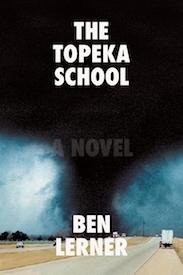
Ben Lerner, The Topeka School
(FSG)
If Ferrante is the class president of autofiction, and Knausgaard the quarterback (bear with me, it’s fall and I love school), then Lerner is the valedictorian—and in true smart(est)-kid style, he has found an elegant, intelligent way to push the form forward in his latest novel. The Topeka School inhabits the mind of a Lerner-stand-in (Adam, again), but also his mother, and his father, and a childhood acquaintance, whose own story is playing out in parallel. The effect is a little like getting to look at a real life from all angles—and for that reason, while the novel is less instantly dazzling than 10:04, it is ultimately deeper and more rewarding.
–Emily Temple, Lit Hub senior editor
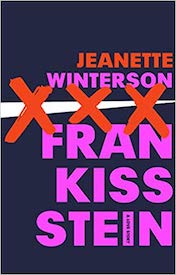
Jeanette Winterson, Frankisstein
(Grove Press)
Disclaimer: I’m a huge Jeanette Winterson fan, so every time one of her books comes out it’s An Event. Or a gift. Wrapped in careful, clever, and whimsical language, Frankissstein is a present that delves into the past (expect this kind of wordplay throughout!) and the not-so-distant future. Jumping between 1816 Lake Geneva and Brexit Britain, this love story tangles itself up in AI, sex robots, and the experience of feeling misplaced in a body. Described by some as a modern reboot of Frankenstein—with Mary Shelley as a key character and with a creepy underground research facility as a backdrop for part of the tale—this story makes for prime #CoolBookAutumn reading. (Also it was longlisted for this year’s Booker Prize. Just saying!)
–Katie Yee, Book Marks assistant editor
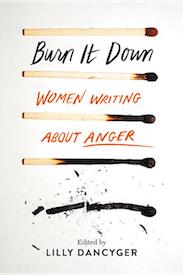
Ed. by Lilly Dancyger, Burn It Down: Women Writing about Anger
(Seal Press)
Burn it Down, edited by Lilly Dancyger, is a brilliant and wide-ranging anthology that offers a comprehensive look at women and anger from a dynamite list of contributors. It should be required reading for anyone who wants to gain a deeper understanding of an often misunderstood emotion.
–Michele Filgate, Lit Hub contributing editor
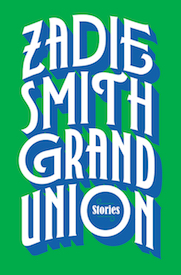
Zadie Smith, Grand Union
(Penguin Press)
Zadie Smith’s first short story appeared in 1999 and she has published enough since then to assemble two books of them. Grand Union collects her best, and it’s a dazzling book. First the range, they arc from a flash fable about a village under armed assault, to one of the most beautiful peans to the lost days of Chelsea in the 1980s. Then there’s the restlessness of design. No two stories in the book are alike, which make it feel even more like a series of Zadie Smith novels in miniature. Stylish, funny, full of intimacies unpacked but never quite dissected by that examination. Reading them, you can almost hear Smith’s formally restless mind turning and turning the tale at hand as she looks at our times through a telescope that is anything but tiny.
–John Freeman, Lit Hub executive editor
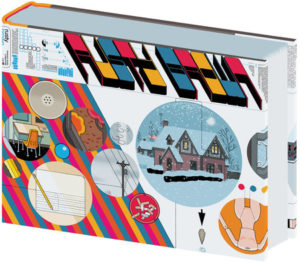
Chris Ware, Rusty Brown
(Pantheon Books)
I know Rusty Brown came out in September (on the 24th) so it’s not technically an October book, but given that it’s 18 years in the making, I don’t feel bad bending the rules a week. Chris Ware began illustrating his Rusty Brown comic strip back in 2001, fast on the heels of Jimmy Corrigan, his gorgeously odd and wondrous 2000 debut, and I guess it took a little longer than expected to finish this one. In this eponymously titled book, which bears about as much resemblance to that strip as Charlie Brown of the 90s did to the tiny figure Schulz drew in the 50s, he has bent the space-time continuum to once again create a modernist graphic novel. This one elegantly folds in and out of the lives of several mid-westerners in Omaha, Nebraska during the first half of a snowy day in the recent century. There’s two young kids and their bullies but also some scattered teachers and a handful of other characters too. The book moves so elegantly from one to the next it’s like reading Woolf in her heyday. Ware’s humble, precise, mournfully hopeful illustrations are so delicate and varied the book’s narrative design glows in the background like a sun that’s just beyond the horizon. Not a warm glow, but powerful nonetheless, and enough light to catch the connections of possibility and kindness that exist between each of his characters — even when they’re openly hostile to each other.
–John Freeman, Lit Hub executive editor
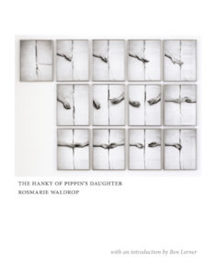
Rosmarie Waldrop, The Hanky of Pippin’s Daughter
(Dorothy)
Rosmarie and Keith Waldrop’s Burning Deck Press, founded in 1961, was the model that inspired Danielle Dutton and Martin Riker to start Dorothy, a publishing project; it’s a great literary alignment that nearly sixty years later, Dorothy has reissued Waldrop’s first novel. The Hanky of Pippin’s Daughter takes place in the milieu of Germany and the Hitler era but the story takes the form of a romp through the indiscretions, infidelities, and jealousies of a family prone to messy trifles. Hanky is lush, lyric, and darkly funny. It’s an iconic addition to the Dorothy family.
–Nate McNamara, Lit Hub contributor

Jeannie Vanasco, Things We Didn’t Talk About When I Was a Girl
(Tin House)
Things We Didn’t Talk About When I Was a Girl wasn’t the first book this year about which I’ve said I wanted to scream into a pillow, but it certainly is the one that deserves it the most. I mean that as a good thing, by the way. Vanasco interviewed her rapist over a series of email and phone and in-person conversations, and this book is a lot. It’s nuanced, profound, murky, morally complex, truly uncomfortable, infuriating—I am so sorry, I need to call it brave. It is. I adored The Glass Eye, so when I found out Jeannie Vanasco had something new coming up soon, I was excited straight away—but wow, did I not expect this. I’m still out of breath, processing, needing to discuss it—so please, everyone hurry up and read it.
–Marta Bussells, Lit Hub European editor at large
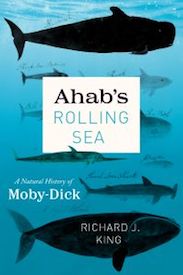
Richard J. King, Ahab’s Rolling Sea: A Natural History of Moby-Dick
(University of Chicago Press)
I’m an easy mark for books like Ahab’s Rolling Sea: A Natural History of Moby-Dick, which I’ve read a perhaps unhealthy number of times, in light of Annie Dillard’s opinion that Melville’s baggy masterpiece is the “best book ever written about nature.” Focusing on 19th century oceanography, natural history, and, of course, the whalers’ understanding of his prey’s remarkable intelligence, King’s book is a fascinating and rare thing: a vital addition to Melville studies.
–Stephen Sparks, Lit Hub contributing editor
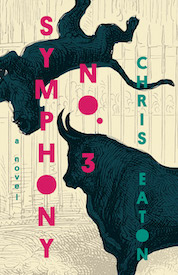
Chris Eaton, Symphony No. 3
(Book*hug Press)
The first I encountered Chris Eaton’s work was when my friends’ band played a show with his old band, Rock Plaza Central, at the now-shuttered Brooklyn DIY venue Glasslands. Eaton’s got a wide range of talents: besides his hallucinatory strengths standing on stage with a guitar and a microphone, he’s also a formally inventive and ambitious writer, someone whose experiments in structure and form are a constant inspiration. His new novel Symphony No. 3 ventures into the world of music, though it’s a very different scene than the clubs and bars Eaton’s own work has taken him to. This novel tells the life story of Camille Saint-Saëns in a structure inspired by his magnum opus: another risk-taking maneuver from an author who’s made a career out of them.
–Tobias Carroll, Lit Hub contributor
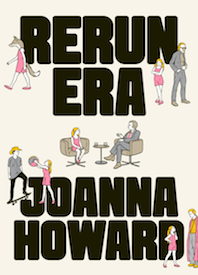
Joanna Howard, Rerun Era
(McSweeney’s)
Some sounds I’ll always associate with growing up in 1980s Kansas: dad’s guitar playing, mom singing her goofy made-up songs, and the voice of Roger Miller as the troubadour rooster in Disney’s Robin Hood. I played that movie every weekend, Miller’s warm vocals and cheery whistling a welcome distraction from my parents’ messy divorce. If Joanna Howard’s slim but poetic memoir, Rerun Era, is any indication, kids all over the American Midwest and Southwest felt the way I did—that rooster was a life saver. Rerun Era captures the sounds, smells, and emotional tenor of growing up in rural Oklahoma. Entwined with Howard’s memories of countrified TV and movies (she loved Smoky and the Bandit even more than Robin Hood) are those of her cheating, truck-driving father and her women’s rights activist mother. Together, these memories portray a part of America—and its provincial popular culture—rarely explored in literature.
–Amy Brady, Lit Hub contributor
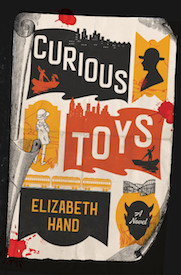
Elizabeth Hand, Curious Toys
(Mulholland Books)
If you don’t know much about Henry Darger, recluse and writer, do a search on his name before reading Elizabeth Hand’s intriguing new novel Curious Toys. In it, a young girl nicknamed Pin dresses as a boy to roam the carnival grounds where her father works as a fortune teller. When she stumbles on a violent crime against a child, her path crosses with Darger’s—you’ll know, from reading his Wikipedia page, that the strange man was obsesses with child murders and transvestism. Will Pin and Darger’s efforts uncover a man madder and much more dangerous than Darger? Or is Pin risking her life? Suspenseful questions, yes—but Hand writes such thick, compelling atmosphere that readers will lose their questions in the moment-by-moment turns through early 20th-century Chicago.
–Bethanne Patrick, Lit Hub contributing editor
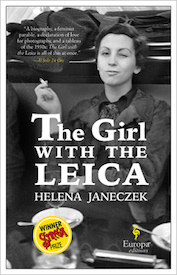
Helena Janeczek, trans. by Ann Goldstein, The Girl with the Leica
(Europa Editions)
I have a chicken/egg fascination with women artists and their more famous male counterparts; I don’t always trust the paternalistic narrative. Fictionalized tellings allow for different “heroes” or at least co-heroes. Reading about the female half of the famed war photography Robert Capa was something I was looking forward to. Initially, I found it kind of messy and disjointed, but I quickly learned that if I treated each vignette, separated by double-spaced blank zones, as camera snapshots, the story revealed itself. Click, a new lover. Click, an old lover. Click, a flashback. What is created is a fictional montage of a woman who unabashedly acted out and on her passions: passionately anti-fascist, passionately and lustfully human. It is not a new story that war, shared political ideologies, and danger make for sexual passion; her sexual partners and her authority in the relationships are perfect examples. And though fiction, I believe she was certainly in charge. Her ending is a heroic one; she is run over by a tank as she captures the horrors of war. Each of the three friends that narrate the book weave a picture of a life fully and intrepidly led. Her tragic death is somewhat buffered by the memories of her friends who had the good fortune to survive the fascists of Spain and Europe.
–Lucy Kogler, Lit Hub columnist



















